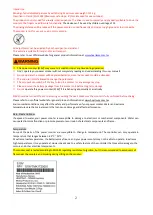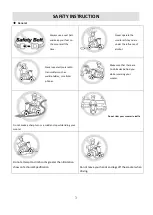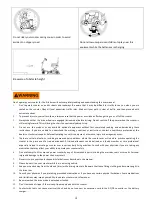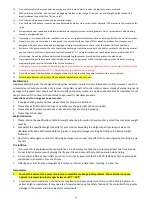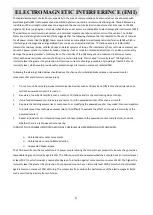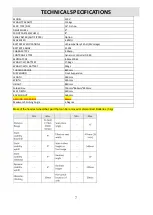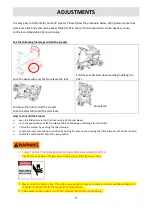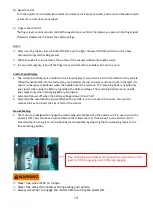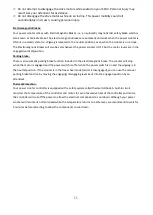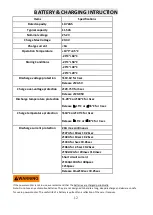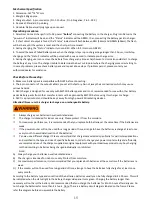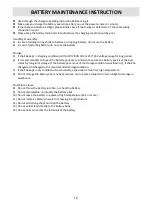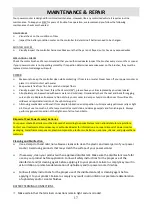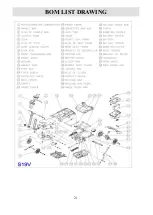
6
ELECTROMAGNETIC INTERFERENCE (EMI)
The rapid development of electronics, especially in the area of communications, has saturated our environment with
electromagnetic (EM) radio waves that are emitted by television, radio and communication signals. These EM wave are
invisible and their strength increases as one approach the source. All electrical conductors act as antennas to the EM
signals and, to varying degrees, all power wheelchairs and scooters are susceptible to electromagnetic interference (EMI).
The interference could result in abnormal, unintentional movement and/or erratic control of the vehicle. The United
States Food and drug Administration (FDA) suggests that the following statement be incorporated to the user’s manual
for all power scooter like the
S19V
. Power scooters may as susceptible to electromagnetic interference (EMI), which is
interfering electromagnetic energy emitted from sources such as radio stations, TV stations, amateur radio (HAN)
transmitter, two-way radios, cellular phones and alarm systems of shops. The interference (from radio wave sources) can
cause the power scooter to release its brakes, move by itself or move in unintended directions. It can also permanently
damage the powered scooter’s control system. The intensity of the EM energy can be measured in volts per meter
(V/m).Each powered scooter can resist EMI up to a certain intensity. This is called “immunity level”. The higher the
immunity level the greater the protection. At this time, current technology is capable of providing at least 20 V/m of
immunity level, which would provide useful protection against common sources of radiated EMI.
Following the warnings listed below should reduce the chance of unintended brake release or powered scooter
movement that could result in serious injury:
1.
Do not turn on hand-held personal communication devices such as citizens band (CB) radios and cellular phones
while the powered scooter is turned on.
2.
Be aware of nearby transmitters such as radio or TV stations and try to avoid coming close to them.
3.
If unintended movement or brake release occurs, turn the powered scooter off as soon as it is safe.
4.
Be aware that adding accessories or components, or modifying the powered scooter, may make it more susceptible
to interference from radio wave sources (Note: It is difficult to evaluate the effect on the overall immunity of the
powered scooter).
5.
Report all incidents of unintended movement or brake release to the powered scooter manufacturer, and note
whether there is a radio wave source nearby.
TURN OFF YOUR POWERED SCOOTER AS SOON AS POSSIBLE WHEN EXPERIENCING THE FOLLOWING:
Unintentional scooter movements
Unintended or uncontrollable direction.
Unexpected brake release
The FDA has written to the manufacturers of power scooters asking them to test new products to be sure they provide a
reasonable degree of immunity against EMI. The FDA requires that a powered wheelchair should have an immunity level
at least 20 V/m, which provides a reasonable degree of protection against more common sources of EMI. The higher the
immunity level the greater the protection. Your powered scooter has an immunity level of 20 V/m which should protect
against common sources of EMI. Warning: The scooter itself can disturb the performance of the electromagnetic fields
such as emitted by alarm systems of shops.
Summary of Contents for S19V
Page 20: ...20 CIRCUIT DIAGRAM...
Page 21: ...21 BOM LIST DRAWING...


